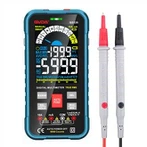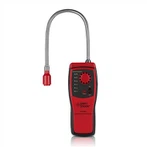Differences between coating thickness gauge and ultrasonic thickness gauge
Difference: coating thickness gauge
Coating thickness gauge is also called coating thickness gauge, coating thickness gauge, coating thickness gauge, film thickness gauge and other flexible names. It is mainly used to measure the thickness of coatings, anticorrosive coatings, electroplated coatings, plastics, paints, plastics, ceramics, enamel and other coatings on metals, so the national standard is formally named as coating thickness gauge. It can also be extended to indirectly measure the thickness of paper, film, plate, etc. (for the indirect measurement method, please call Times Peak Company for consultation at 13366901010). The precision of coating thickness gauge is relatively high, generally in um, and the display resolution can reach 0.01, 0.1 and 1um. The measuring range of coating thickness gauge: generally 0-1250 um; Special in 0-400um and 0-50 mm.
At present, there are two main types of coating thickness gauges: magnetic method and eddy current method, and also called magnetic and nonmagnetic method, iron-based and non-iron-based method.
Magnetic method: Iron-based coating thickness gauge uses magnetic sensors to measure non-ferromagnetic coatings and coatings on ferromagnetic metal substrates such as steel and iron, such as paint, powder, plastic, rubber, synthetic materials, phosphating layer, chromium, zinc, lead, aluminum, tin, cadmium, porcelain, enamel and oxide layer.
Eddy current method: non-iron-based coating thickness gauge uses eddy current sensor to measure enamel, rubber, paint, plastic layer and coating on non-ferrous metal substrates such as copper, aluminum, zinc and tin. Coating thickness gauge is widely used in manufacturing, metal processing, chemical industry, commodity inspection and other testing fields.
Difference: ultrasonic thickness gauge
Ultrasonic thickness gauge is mainly used to measure the thickness of steel plates, steel pipes and other substrates rather than the thickness of coatings and coatings. Other names of ultrasonic thickness gauge: ultrasonic thickness gauge (UT), ultrasonic measuring instrument, wall thickness measuring instrument, steel plate thickness measuring instrument, etc. The national standard specialty is named ultrasonic thickness gauge. The accuracy of ultrasonic thickness gauge is in mm, and the display resolution is generally 0.1, 0.01 and 0.001mm, and the measuring range of ultrasonic thickness gauge is generally 0.75-300mm, especially 0.15-20 mm; 3-500mm。
Principle of ultrasonic thickness gauge: the ultrasonic pulse emitted by the probe reaches the measured object and propagates in the object. When it reaches the material interface, it is reflected back to the probe, and the thickness of the measured material is determined by measuring the propagation time of the ultrasonic wave in the material. Suitable for measuring all sound conducting materials, such as steel, iron, metal, plastics, ceramics, plexiglass and other good conductors of ultrasonic waves.






